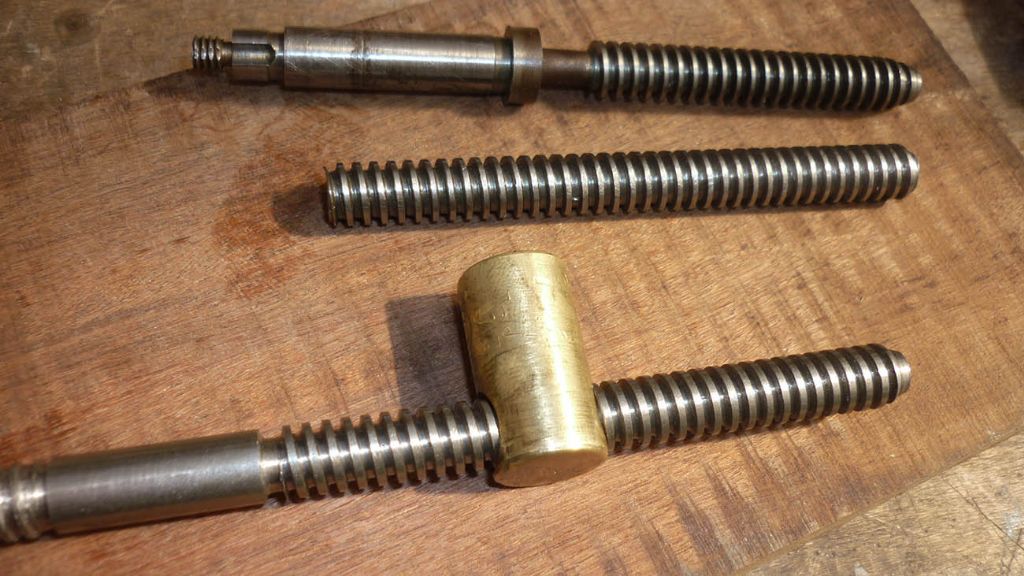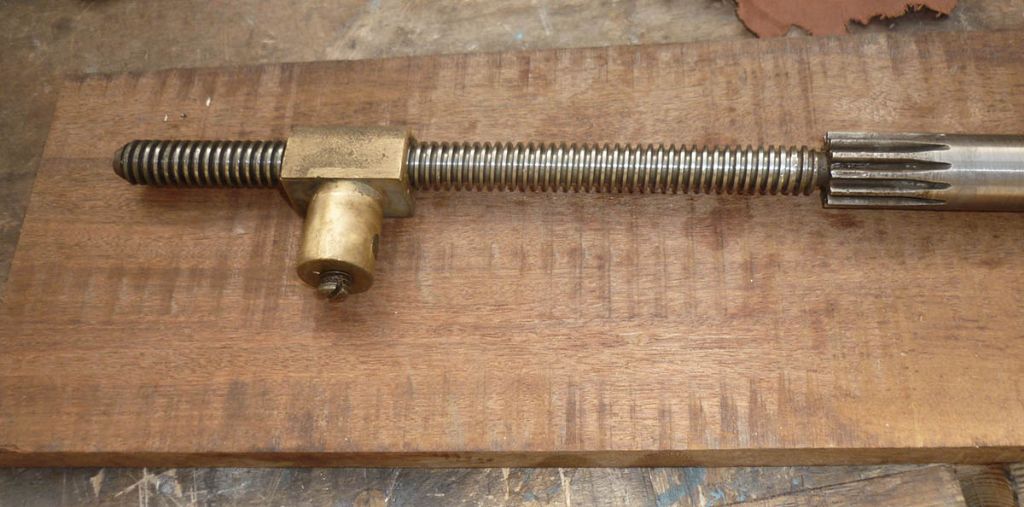Posted by not done it yet on 24/11/2019 06:30:09:
8 tpi would be close to 3mm pitch (actually 3.18). Please do not assume anything – you may well be wrong, so always check it out properly. 2mm pitch is just that – there is no need to try to convert to imperial (it would actually be 12.7 tpi!).
While not standard myford, I would make them in square thread, not acme, although at only 3/8” diameter that may be a little more awkward. Cutters are easily ground in the home workshop for both inside and outside threads.
Myford’s competitor (‘just down the road&rsquo used square threads for feed screws – but 1/2” in diameter. Nothing at all wrong with their feed screws (their lathes were of much higher quality than those of myford). I am currently cutting a new nut in square format for one of those. One only really needs ACME thread for lead screws, that need to be engaged and disengaged with half nuts.
used square threads for feed screws – but 1/2” in diameter. Nothing at all wrong with their feed screws (their lathes were of much higher quality than those of myford). I am currently cutting a new nut in square format for one of those. One only really needs ACME thread for lead screws, that need to be engaged and disengaged with half nuts.
One could always cut the screw easily enough and then make the feed screw nut in acetal. Probably better to cut a piece of extra screw for that, including clearance, as acetal will leave no thread clearance when moulded by the ‘heat and squeeze’ method.
I got the 8tpi figure somwhere else on another myford thread in a forum (excuse the pun lol)
I didnt think it sounded right.
Anyway, ive done a bit more research and yes, its supposed to be a square thread, and I believe this is what Myford use.
I also found a blog where someone machined their own feedscrews and nuts. You need a moving steady and the right screwcutting gears and ground cutting tooling etc.
Quite a lot of work and hard to do a nice job, he had to do many slow passes on the lathe.
He made his shaft 9mm but 3.8" is closer to 9.5mm
Does shaft diameter affect TPI?
If not, I think ive found the answer.
I can find many retailers who stock square threaded shaft in 10mm diameter, 2mm pitch.
Should be able to find the correct tap to make my own nuts also.
If you look at the aftermarket feedscrews that myford solutions sell, they look simply like they are made from cut down prethreaded rod, with the end machined down and threaded to accept the handle.
They differ in that they dont have the unthreaded "lip" at the end of the shaft, I thought this may have been required, so not sure why they machined them like this, unless they had to do away with it by using prethreaded metric rod.
See photos:


Their feedscrews also are bronze, not the crappy zamac alloy that myford uses, but I will machine my own if this will work with 10mm rod if it does not affect the dial calibration.
Baldric.


 used square threads for feed screws – but 1/2” in diameter. Nothing at all wrong with their feed screws (their lathes were of much higher quality than those of myford). I am currently cutting a new nut in square format for one of those. One only really needs ACME thread for lead screws, that need to be engaged and disengaged with half nuts.
used square threads for feed screws – but 1/2” in diameter. Nothing at all wrong with their feed screws (their lathes were of much higher quality than those of myford). I am currently cutting a new nut in square format for one of those. One only really needs ACME thread for lead screws, that need to be engaged and disengaged with half nuts.





